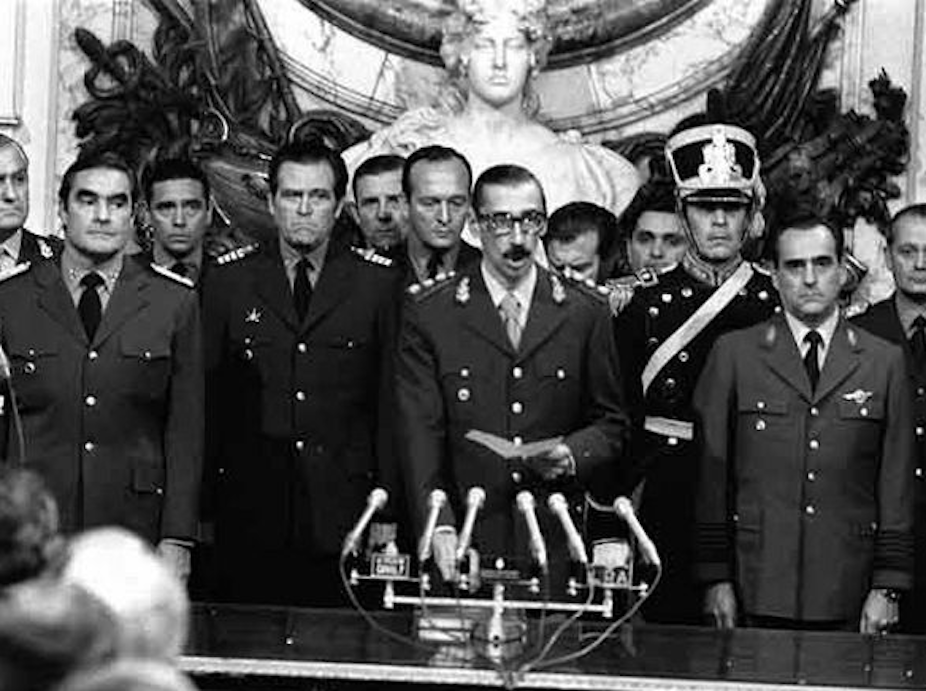The visit to Argentina by US president Barack Obama on the 40th anniversary of the coup in which the now-infamous military Junta seized power has opened up a lot of barely healed wounds. The families of more than 30,000 people either killed or “disappeared” during the seven-year dictatorship of the generals are boycotting memorial ceremonies, instead staging their own mass demonstrations to call for justice.
Forty years on, the coup against the Peronist government still reverberates through Argentinian society. It was carried out by senior army officers on March 24, 1976 after two years of planning. This was a sharp reaction by the upper echelons of the armed forces, in cahoots with landowners (the “terratenientes”) and industrialists. The takeover was a response to what Argentina’s elites perceived to be a threat from the increasingly active working class and unionised middle classes.
This threat was massively overplayed. Successive Peronist regimes had adopted an explicit anti-Marxist orientation and any communist threat was more rhetorical than realistic in Argentina. But in the wake of a series of popular revolutionary uprisings in Latin America – especially Cuba – there was heightened concern in Washington.
The US role in the events of March 1976 has never fully emerged, despite the release by the Clinton administration of documents in 2000 which detailed US involvement in the Chilean coup of 1973. Certainly, many Argentine military officers were trained in the US at the School of the Americas at this time. This training was to become notorious.
Obama has pledged to release more documents in the hope that “this gesture helps rebuild trust that may have been lost between our two countries”.
Impetus for change
In a strange way, the rule of the Junta actually paved the way for the development of a particular form of liberal democracy in Argentina in which human rights organisations, women’s groups and other non-government actors drive the political process as much as politicians.

It was Argentina’s defeat in the Malvinas/Falklands war, which eroded the Junta’s legitimacy in the eyes of most people in Argentina and gave impetus for political change. But it was the demand for “truth” and “justice” by human rights groups (later extended to include the promotion of museums, historical sites and the like) that really paved the way for the democratic government in Argentina.
Victims of human rights abuses were unwilling to trust the state – during the Junta, the state had acted more as an executor of political violence than a guarantor of the rights of its citizens. But despite this, the opposition did not become anti-institutional, instead seeking “memory, truth and justice” within the existing institutional framework (international and national) in order to produce changes in the Argentinian state.
Trying times
The results were mixed. Before finally scheduling elections, which were won by the opposition Raúl Alfonsín, the Junta had granted a blanket amnesty for all offences connected to the “Dirty War”. This was overturned by the government of Alfonsín, however, and a number of trials took place between 1983 and 1989, although under pressure from the military Alfonsín’s government brought in an amnesty for lower-ranking military and security officials on the basis that they were carrying out orders.
This was extended by pardon laws under the presidency of Carlos Menem – and it looked as if many of the people behind the thousands of murders and disappearances would simply get away with their crimes.

But pressure from Argentina’s courts and civic groups as well as international campaigns by global human rights organisations led to the reopening of trials during the administrations of Cristina and Néstor Kirchner.
Among the most visible of those civic groups were the Mothers of the Plaza de Mayo and Grandmothers of the Plaza de Mayo. They developed from a group of women seeking information about children who had vanished during the Junta years into a massive social movement commanding global recognition and wielding enormous power within Argentina.
Both groups announced that they would boycott the 40th anniversary ceremonies – preferring to organise their own marches across the country.
People power
Argentina’s modern democracy reflects the power of these popular movements. Contentious issues, such as pay and working conditions, the defence of public education, the struggle for gender equality and protection against police abuse, are seen as issues for public debate by NGOs including trade unions, women’s groups and neighbourhood associations.
As a result, Argentina has developed a number of alternative means, beyond the hard-won institutional mechanisms, for forcing problematic issues on to the political agenda and challenging the dominant political culture that – in Argentina’s bloody past – was able to normalise injustice.

